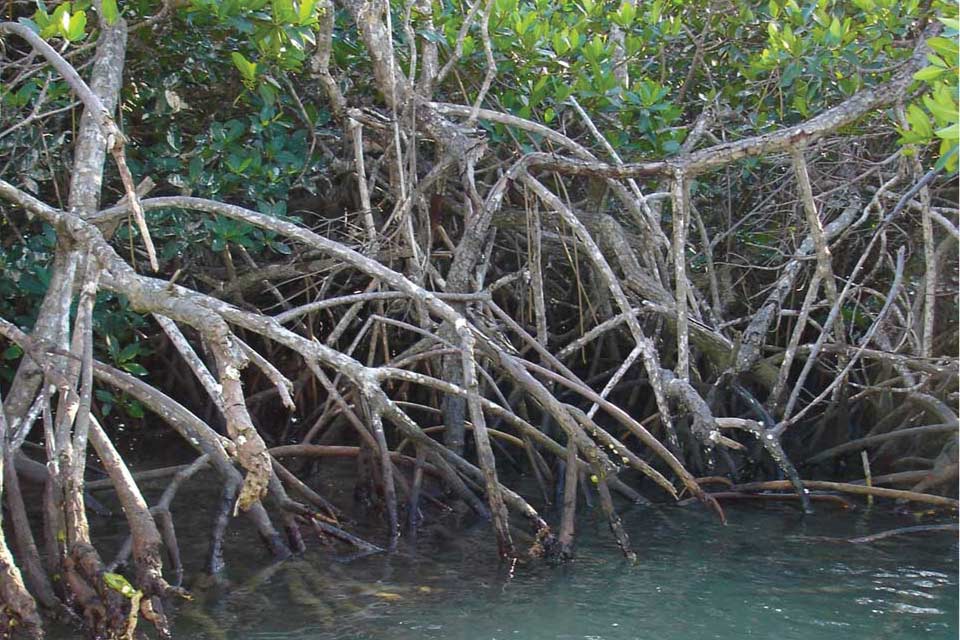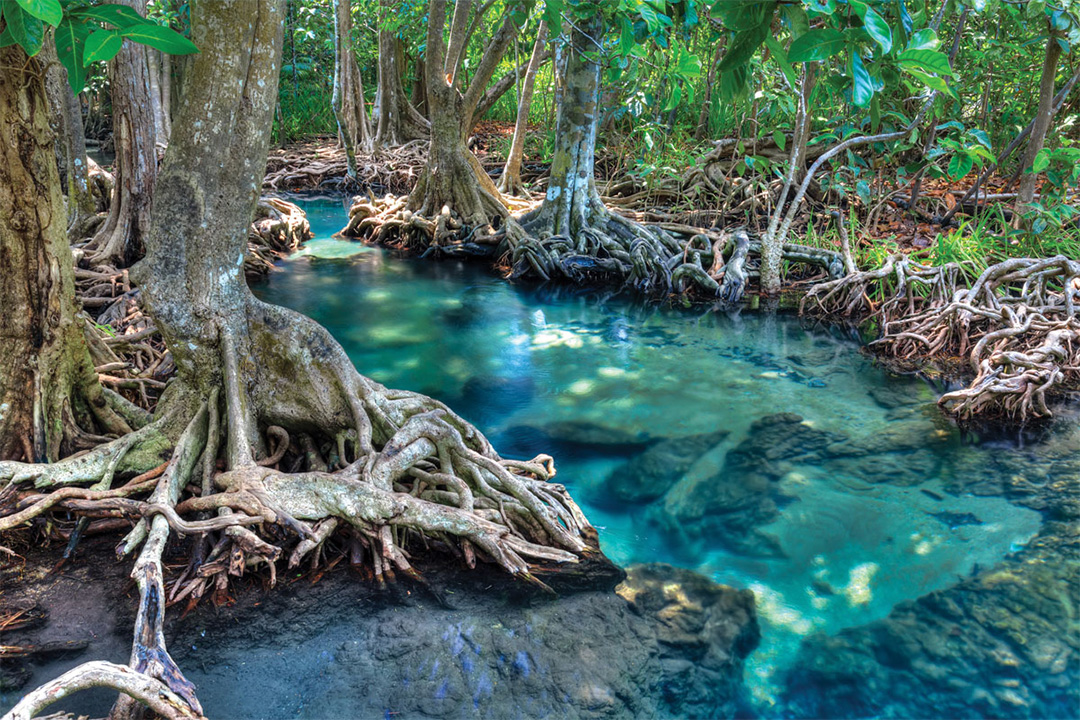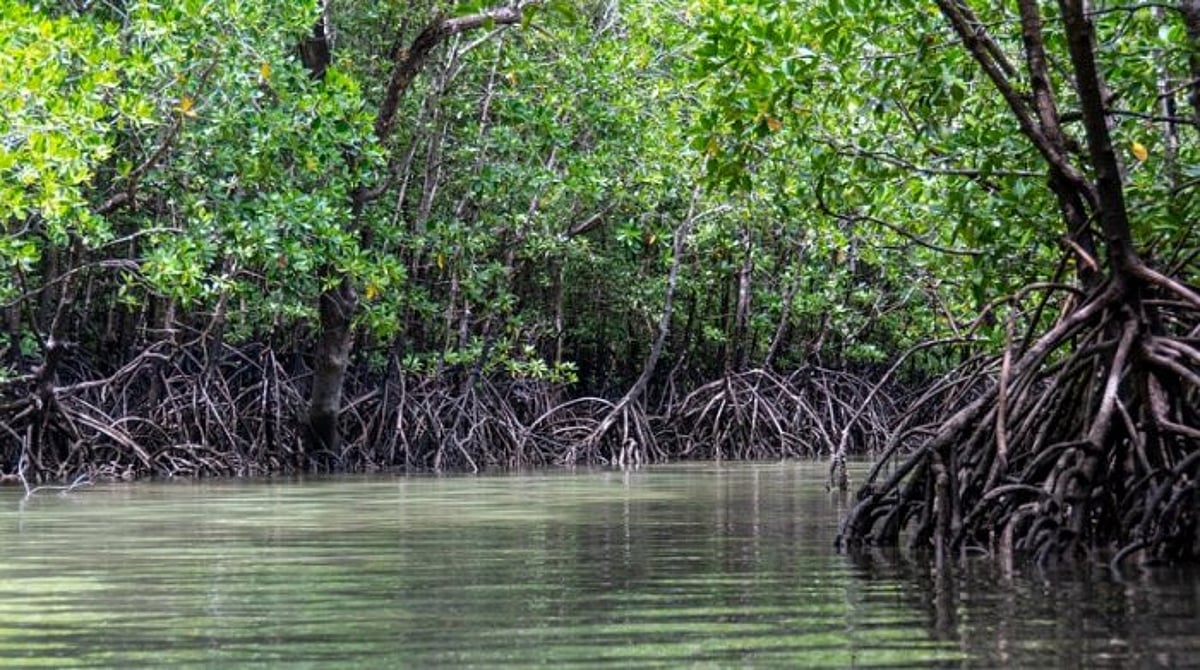What is mangrove: Mangroves are a unique type of forest ecosystem found in coastal areas, where saltwater meets land. These remarkable trees and shrubs thrive in salty, tidal environments, forming dense, impenetrable forests that are both ecologically vital and visually stunning. Mangroves play an indispensable role in protecting coastlines, supporting biodiversity, and sustaining the livelihoods of millions of people around the world.

In this blog, we’ll delve into the world of mangroves, uncovering their features, significance, and the incredible role they play in ecosystems like the Sundarbans, the world’s largest mangrove forest. If you’re planning to explore the magic of mangroves, Royal Sundarban Tourism is here to guide you to their heart!
What Are Mangroves?
Mangroves are trees and shrubs that grow in saline or brackish water along coastlines, river mouths, and tidal zones. These unique plants are adapted to thrive in challenging environments, such as areas with fluctuating water levels and high salinity.

Key Features of Mangroves
- Salt Tolerance: Mangroves can filter out salt from seawater, allowing them to survive in saline conditions.
- Prop Roots and Pneumatophores: Their unique root systems allow them to anchor in soft, waterlogged soil and breathe in oxygen-poor environments.
- Flood Adaptation: Mangroves are adapted to survive flooding and tidal changes, making them crucial in coastal ecosystems.
Where Are Mangroves Found?
Mangroves are distributed across tropical and subtropical regions of the world. Countries like India, Bangladesh, Indonesia, Brazil, and Australia are home to significant mangrove forests.
The Sundarbans: A Mangrove Marvel
The Sundarbans, spanning India and Bangladesh, is the largest mangrove forest in the world. This UNESCO World Heritage Site is a treasure trove of biodiversity and a critical habitat for the Royal Bengal Tiger, saltwater crocodiles, and other unique wildlife.

Why Are Mangroves Important?
Mangroves are ecological powerhouses that provide a wide range of benefits to the environment, wildlife, and humans. Here’s why they are so essential:
1. Coastal Protection
Mangroves act as natural barriers, protecting coastal communities from storms, cyclones, and tsunamis by absorbing the impact of strong waves and winds.
2. Carbon Storage
Mangroves are among the most effective ecosystems for carbon storage, helping combat climate change by absorbing and storing large amounts of carbon dioxide.
3. Biodiversity Hotspots
Mangroves support a rich array of wildlife, including fish, crabs, birds, and mammals. They serve as breeding grounds and nurseries for many marine species.
4. Livelihood Support
Millions of people rely on mangroves for their livelihoods, engaging in fishing, honey collection, and sustainable forestry.

5. Water Quality
Mangroves filter pollutants and improve water quality by trapping sediments and nutrients, keeping nearby waters clean and healthy.
Adaptations of Mangroves
Mangroves have evolved remarkable adaptations to survive in their challenging environments:
- Salt Excretion: Some species excrete salt through their leaves to manage salinity.
- Unique Root Systems: Stilt roots, buttress roots, and pneumatophores allow mangroves to stabilize themselves and breathe in oxygen-poor soils.
- Water Conservation: Thick leaves with waxy coatings minimize water loss in hot, salty conditions.
- Also, you can Book the Sundarban Tour At Maity Tourism and Sundarban Leisure Tourism Powered By Argusdna,
Mangroves and Wildlife
Mangroves are crucial habitats for a variety of species. Here’s how they contribute to biodiversity:
- Fish Nurseries: Many commercially important fish species start their lives in mangroves.
- Bird Habitats: Mangroves attract migratory birds and are home to species like herons, egrets, and kingfishers.
- Unique Mammals: In the Sundarbans, species like the Royal Bengal Tiger coexist with mangroves, showcasing their adaptability.

Threats to Mangroves
Despite their importance, mangroves face several threats, including:
- Deforestation: Clearing mangroves for agriculture, aquaculture, and urbanization has led to significant habitat loss.
- Pollution: Industrial waste, oil spills, and plastic pollution harm mangrove ecosystems.
- Climate Change: Rising sea levels and changing weather patterns pose a major threat to mangroves worldwide.
How Can We Protect Mangroves?
Conserving mangroves is essential for maintaining ecological balance and protecting coastal communities. Here’s how we can contribute:
- Promote Reforestation: Plant mangroves in degraded coastal areas to restore ecosystems.
- Support Sustainable Practices: Encourage eco-friendly fishing and forestry practices.
- Raise Awareness: Educate communities about the value of mangroves and the need for their conservation.
- Support Responsible Tourism: Choose eco-tourism operators like Royal Sundarban Tourism, who prioritize conservation.
Why Visit Mangroves with Royal Sundarban Tourism?
Exploring mangroves, especially in the Sundarbans, is a once-in-a-lifetime experience. Royal Sundarban Tourism ensures you experience the beauty and significance of mangroves while promoting responsible tourism.

1. Expert Guides
Learn about mangroves and their ecosystems from experienced naturalists who make your visit both educational and enjoyable.
2. Safe and Comfortable Travel
With well-maintained boats, comfortable accommodations, and expert staff, Royal Sundarban Tourism prioritizes your safety and satisfaction.
3. All-Inclusive Packages
Enjoy curated tours that include:
- Guided boat safaris through mangrove forests.
- Visits to wildlife hotspots like watchtowers.
- Authentic local meals and comfortable eco-lodges.
4. Easy Booking
Book your mangrove exploration tour with ease:
- Website: Royal Sundarban Tourism
- Phone: +91 7439965413 / +91 8584838109
- Payment Options: GPay and PhonePe at 9804049535
- Email: info@royalsundarbantourism.com
- Address: Village: Tiger More, Gosaba, Pakhiralay, District- 24 Parganas South, West Bengal 743370
Best Time to Explore Mangroves
For the best experience, visit mangroves from November to February, when the weather is pleasant and wildlife is more active. Avoid monsoons, as heavy rains can hinder accessibility.
Plan Your Mangrove Adventure Today!
Mangroves are more than just forests—they are lifelines for ecosystems, wildlife, and communities. Witness the beauty and significance of mangroves in the Sundarbans with Royal Sundarban Tourism, your trusted partner for eco-friendly and unforgettable adventures.
